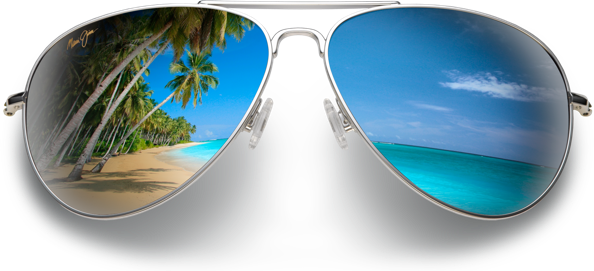
Spring break and summer vacation are synonymous with fun in the sun.
And just like sunscreen protects your skin from the sun’s harmful ultraviolet (UV) rays, your eyes also need protection from UV rays.
Exposure to UV rays can cause damage to the skin in the form of sunburn, and it can also harm the eyes or affect vision. However, 94 percent of people don’t realize the sun can be just as harmful to their eyes as it is to their skin.
The sun casts three types of UV rays. UV-C rays are the least threatening type of ray. They’re absorbed by the ozone layer and thus, do not present a health threat. Then there are UV-A and UV-B rays, which can have adverse long- and short-term effects on the eyes and vision. These can also lead to an increased risk of skin cancer.
If your eyes are exposed to excessive amounts of UV radiation over a short period of time, you are likely to experience an effect called photokeratitis, or “sunburn of the eye.”
This condition may be painful and includes symptoms such as red eyes, a foreign body sensation or gritty feeling in the eyes, extreme sensitivity to light and excessive tearing. Fortunately, this condition is usually temporary and rarely causes permanent damage to the eyes.
However, long-term exposure to the sun’s powerful UV rays can be more serious.
Studies have shown that exposure to small amounts of UV radiation over a period of many years increases the chance of developing cataracts, a clouding of the eye’s lens that affects vision, as well as macular degeneration, the debilitating disease that leads to blindness over time. Prolonged exposure to the sun may also cause damage to the retina, a nerve-rich lining of the eye that is used for seeing.
Skin cancer on the eyelid is also a concern.
The Skin Cancer Foundation says basal cell carcinoma, squamous cell carcinoma and melanoma on the eyelid account for 5 to 10 percent of all skin cancers. Most of these types of skin cancers occur on the lower lid, which receives the most sun exposure.
The sun can also age your eyes. Ninety percent of visible premature aging around the eyes is caused by UV damage. Since it is not clear how much exposure to UV rays will cause damage, we recommend wearing quality, polarized sunglasses that offer UV protection whenever you’re outdoors – even on cloudy or overcast days. Surprisingly, 40 percent of UV exposure occurs when you’re not in direct, bright sunlight.
The AOA also suggests wearing a hat or cap with a wide brim whenever you spend time outdoors.
To provide adequate protection for your eyes, sunglasses should:
- Block out 99 to 100 percent of both UV-A and UV-B radiation
- Screen out 75 to 90 percent of visible light
- Be perfectly matched in color and free of distortion and imperfection
If you’re a fan of the great outdoors and spend a lot of time in bright sunlight, talk to us about sunglass frames that are fitted with wrap style lenses. The added protection helps protect your peripheral vision from the sun’s rays. And don’t forget teens and kids spend a lot of time outdoors (often more than adults) playing sports, so sunglasses, hats with brims and sunscreen should be worn whenever possible.
